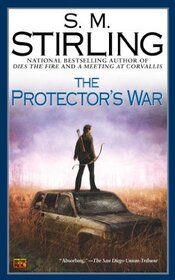Helpful Score: 4
This trilogy is about the ending of "life as we know it." Literally. There are many post-Apocalyptic stories by other authors, but this one is about the process of trying to survive a complete change in physics of this world and what adjustments and re-thinking have to be done to do so. There are several approaches and this book starts the search of how not only other parts of the US survived but also which other parts of the world survived and how. It points out that it only takes the loss of the principal of electricity to bring our world down to its knees.
The characters are a little older than in the first book by about 10 years. Several types of governments vie for control of different parts of the country and the world. The shock of what's happened is over and those who couldn't adjust have died out. Most of the population is below the age of 50. The main characters of the first book have come into their own and have fared well. This book starts the conflict that will end the struggle for control of the area of the west coast of the US.
I wish there had been less "fantasy" of the Wiccan way of life (because it becomes so flowery) and more of how the other parts survived - like down in the California area. But the story still flows and conflict remains with intrigue and some political wrangling throughout the book. I would have liked to ask Stirling how he thought the people who lived "off the grid" before the Change occurred would fare under these circumstances because there is no mention of those types beyond the suggestion of ranchers in the western Idaho and Utah regions.
I still like the story and the characters as well as the world he has constructed. It made me wonder what I'd have to do to survive.
The characters are a little older than in the first book by about 10 years. Several types of governments vie for control of different parts of the country and the world. The shock of what's happened is over and those who couldn't adjust have died out. Most of the population is below the age of 50. The main characters of the first book have come into their own and have fared well. This book starts the conflict that will end the struggle for control of the area of the west coast of the US.
I wish there had been less "fantasy" of the Wiccan way of life (because it becomes so flowery) and more of how the other parts survived - like down in the California area. But the story still flows and conflict remains with intrigue and some political wrangling throughout the book. I would have liked to ask Stirling how he thought the people who lived "off the grid" before the Change occurred would fare under these circumstances because there is no mention of those types beyond the suggestion of ranchers in the western Idaho and Utah regions.
I still like the story and the characters as well as the world he has constructed. It made me wonder what I'd have to do to survive.
Helpful Score: 1
Great book! This continues the epic tale of the Mackenzies and the Bearkillers after the Change, with some new faces arriving on the scene. The world building in this book is very detailed, believable, and fascinating. The characters are well drawn, distinct, and interesting, and just the kind of people you'd want to have around after a techno-apocalypse! I cannot wait to read the next book in the series!
A great story about what would happen if the world had changed and basically went back to the Dark Ages. Plenty of trials with swords and bows. Amazing story with the common good vs evil at its base. This one does not answer the question on who wins but keeps you turning the pages and ready to read the next book.




